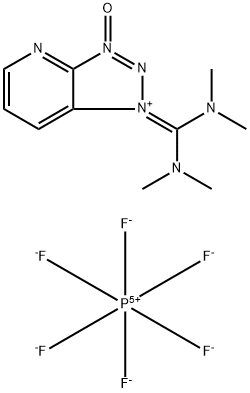148893-10-1

SAFETY INFORMATION
| Signal word | Danger |
|---|---|
| Pictogram(s) |
 Health Hazard GHS08 |
| GHS Hazard Statements |
H317:Sensitisation, Skin H334:Sensitisation, respiratory |
| Precautionary Statement Codes |
P261:Avoid breathing dust/fume/gas/mist/vapours/spray. P272:Contaminated work clothing should not be allowed out of the workplace. P280:Wear protective gloves/protective clothing/eye protection/face protection. P284:Wear respiratory protection. P302+P352:IF ON SKIN: wash with plenty of soap and water. |
COMPUTED DESCRIPTORS
| Molecular Weight | 380.23 g/mol |
|---|---|
| Hydrogen Bond Donor Count | 0 |
| Hydrogen Bond Acceptor Count | 10 |
| Rotatable Bond Count | 2 |
| Exact Mass | 380.09491509 g/mol |
| Monoisotopic Mass | 380.09491509 g/mol |
| Topological Polar Surface Area | 62.4 Ų |
| Heavy Atom Count | 24 |
| Formal Charge | 0 |
| Complexity | 364 |
| Isotope Atom Count | 0 |
| Defined Atom Stereocenter Count | 0 |
| Undefined Atom Stereocenter Count | 0 |
| Defined Bond Stereocenter Count | 0 |
| Undefined Bond Stereocenter Count | 0 |
| Covalently-Bonded Unit Count | 2 |
| Compound Is Canonicalized | Yes |
PRODUCT INTRODUCTION
Description
HATU is a chemical reaction or synthetic reagent used as a peptide coupling agent and a catalyst for selective acylation. HATU is a highly efficient coupling reagent widely used in solid-phase and solution-phase peptide synthesis. In a comparative study, HATU produced higher coupling yields and smaller enantiomers than HBTU and TBTU. Although DMF is the typical solvent, other non-polar compounds are also used. HATU forms HOAt when present, resulting in activated esters with high sensitivity to amino acids. While the side reaction may produce guanidine byproducts, the addition of HOBt helps mitigate this. Interestingly, although HATU was originally thought to be a urea-based salt, X-ray analysis revealed its structure to be a guanidine oxide.
